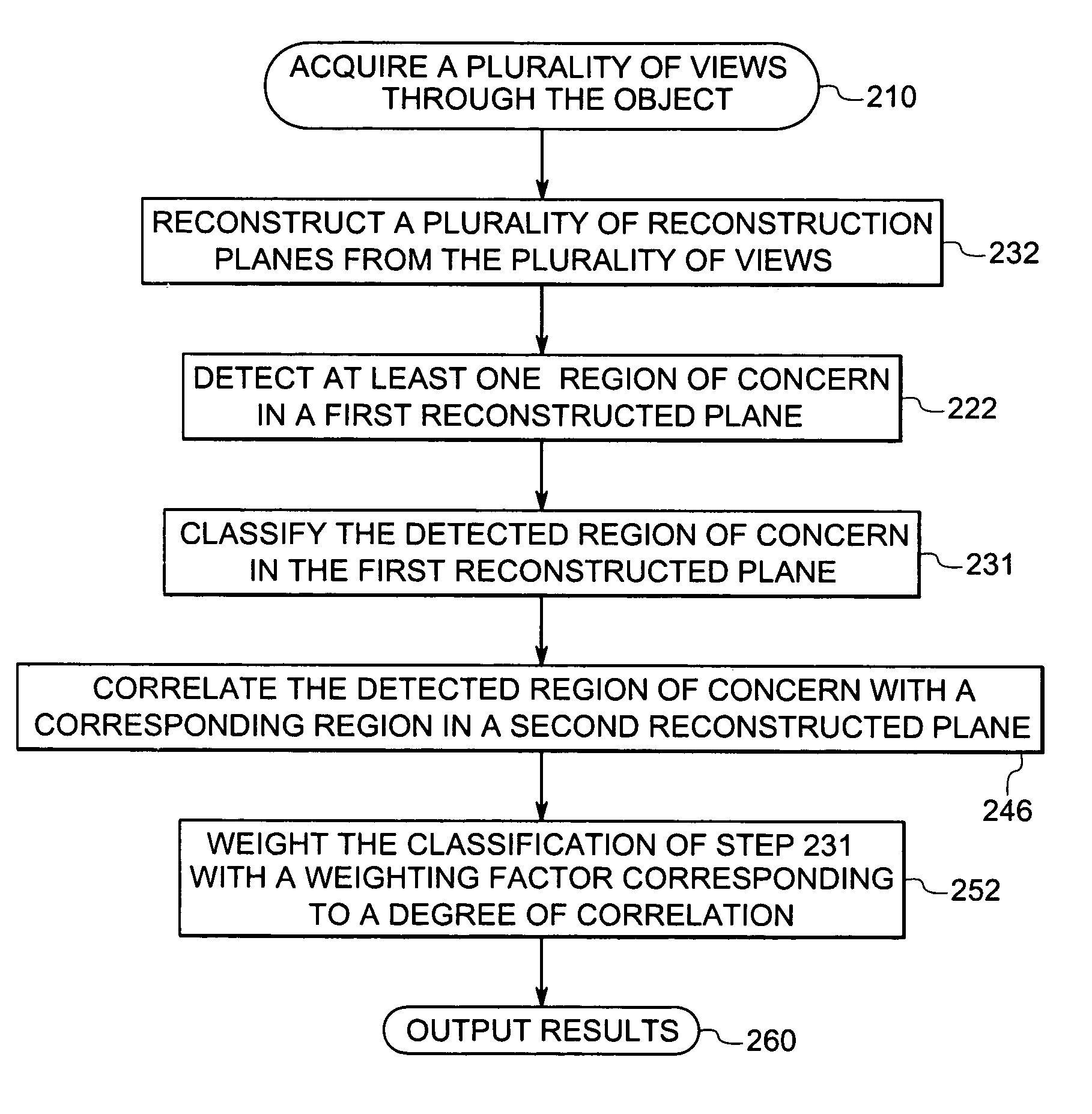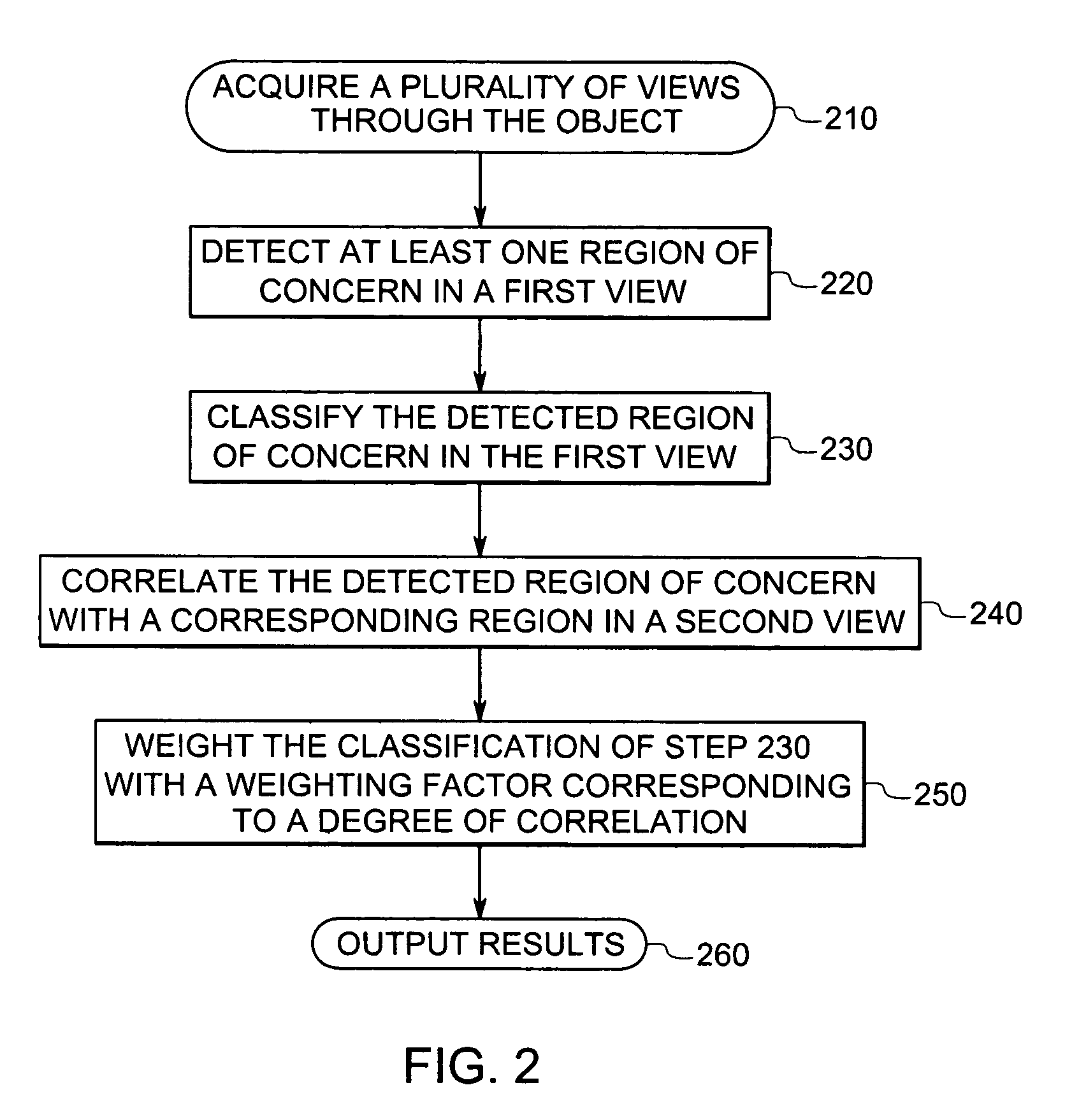Computer aided detection (CAD) for 3D digital mammography
a computer-aided detection and digital mammography technology, applied in the field of digital imaging analysis, can solve the problems of film saturation, hinder the clinician's ability to properly identify, and the standard mammography technique suffers from many problems, so as to achieve the effect of reducing contrast, reducing contrast, and reducing contras
- Summary
- Abstract
- Description
- Claims
- Application Information
AI Technical Summary
Benefits of technology
Problems solved by technology
Method used
Image
Examples
Embodiment Construction
[0027]Reference will now be made in detail to presently preferred embodiments of the present invention. Wherever possible, the same reference numbers will be used throughout the drawings to refer to the same or like parts.
[0028]The present invention will be described in reference to apparatuses and methodology for breast imaging and breast cancer detection. It should be appreciated, however, that the teachings of the present invention may also be used in other areas, such as lung imaging, brain imaging, liver imaging, kidney imaging, bone imaging, and other medical areas, as well as in industrial applications, such as detecting low density regions in fabricated parts, or performing fault / fatigue testing (e.g., examining for cracks, depressions, or impurities).
[0029]In recent years, research into improved imaging systems for breast cancer detection has focused on digital imaging systems, and more particularly, to digital imaging systems with automated abnormality detection and risk a...
PUM
 Login to View More
Login to View More Abstract
Description
Claims
Application Information
 Login to View More
Login to View More - R&D
- Intellectual Property
- Life Sciences
- Materials
- Tech Scout
- Unparalleled Data Quality
- Higher Quality Content
- 60% Fewer Hallucinations
Browse by: Latest US Patents, China's latest patents, Technical Efficacy Thesaurus, Application Domain, Technology Topic, Popular Technical Reports.
© 2025 PatSnap. All rights reserved.Legal|Privacy policy|Modern Slavery Act Transparency Statement|Sitemap|About US| Contact US: help@patsnap.com



